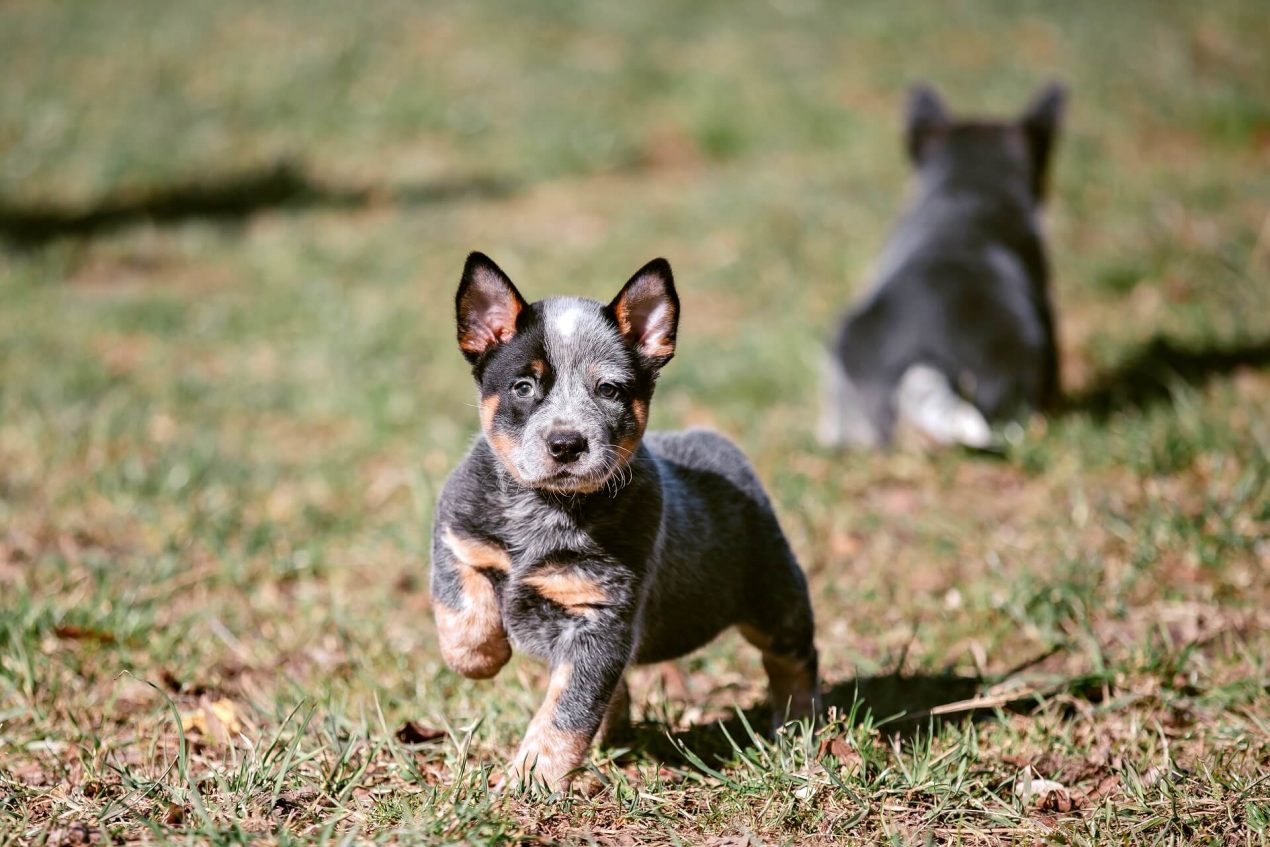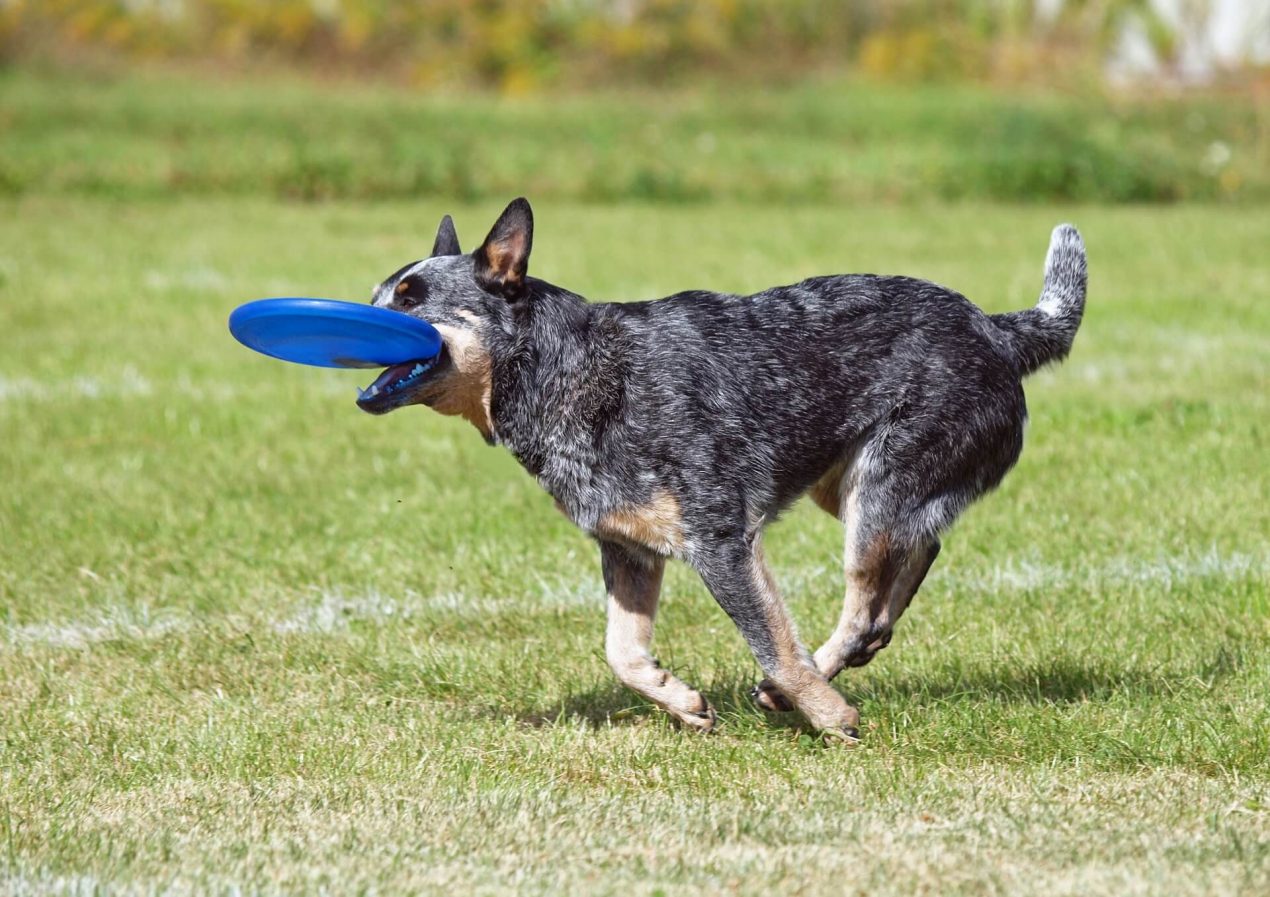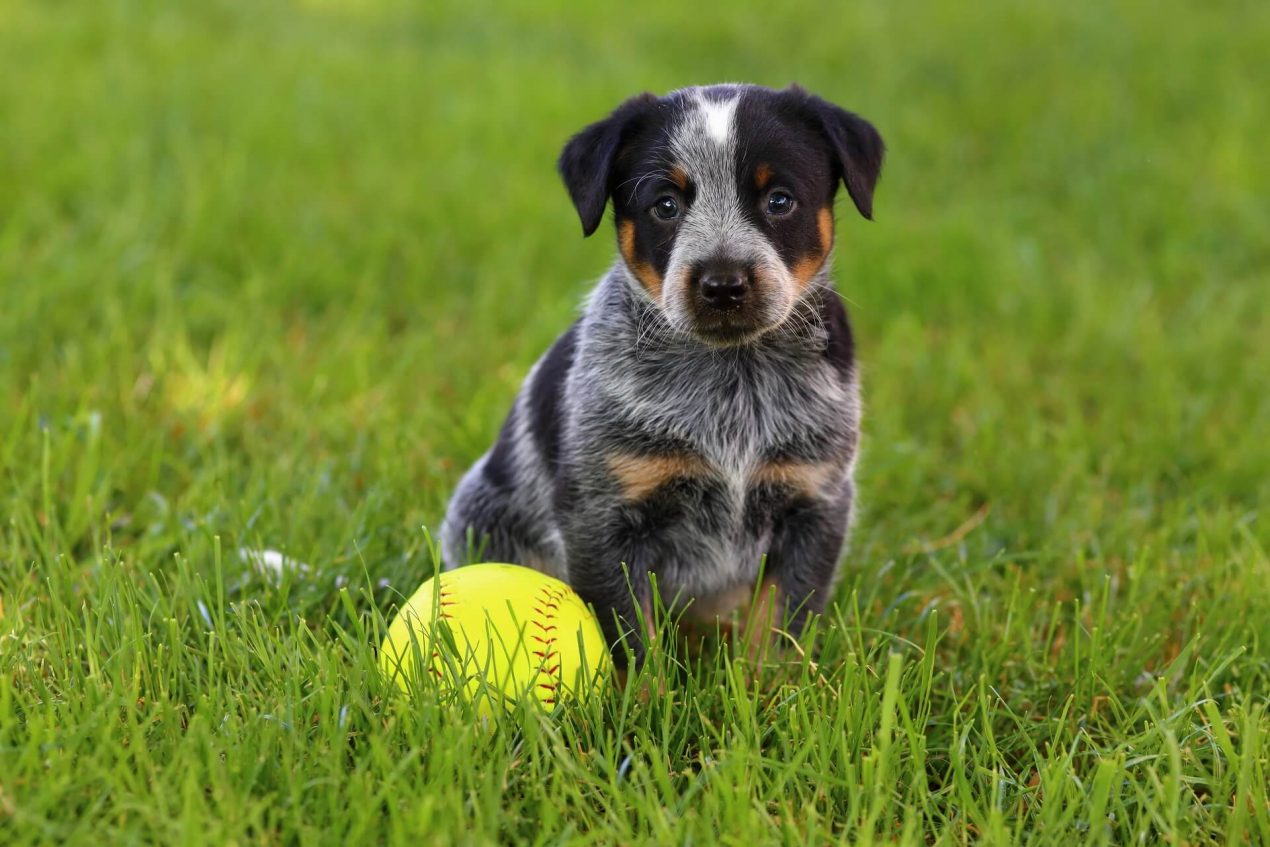The Australian Cattle Dog, or Blue Heeler, is a small powerhouse whose original task was herding large herds of cattle. Nowadays, it is a versatile service or companion dog, preferably living amidst a sports-loving family in rural areas.
History of the Australian Cattle Dog
As the name suggests, the Australian Cattle Dog is a breed originating from Australia. There, it had a specific role and was primarily used for driving large herds of cattle. During its work, it was subjected to physical extremes and various weather conditions, which made it develop into a resilient dog.
The reason the Australian Cattle Dog is known as the “Heeler” in Australia is due to its herding technique, heeling. In this technique, the dog snaps at the lower part of the legs to keep the cows moving. A similar technique is employed by herding dogs in what’s known as “nipping.”
The history of the Australian Cattle Dog dates back approximately 200 years. The breeds that have been crossed over the years can only be guessed until the genome is decoded.
These are some of the ancestors of the Heeler:
- Drover Dog
- Kelpie
- Collie
- Dingo
- Dalmatian
- Bull Terrier
So, the Australian Cattle Dog is quite an interesting mix of breeds.

In 1963, it was officially standardized in its homeland. However, it was purely a working dog at that time. The show line emerged later. In 1972, it was recognized by the FCI and in 1980 by the AKC.
Breed Overview
GROUP: Herding
HEIGHT: 17 to 20 inches
WEIGHT: 35 to 50 pounds
COAT: Dense double coat
COAT COLOR: Blue or red in mottled or speckled patterns
LIFE SPAN: 12 to 16 years
TEMPERAMENT: Loyal, active, intelligent
HYPOALLERGENIC: No
ORIGIN: Australia
Nature and Character
The Australian Cattle Dog combines many different traits in a harmonious overall personality.
Bravery: The cattle it supervises in its homeland are about 40 times its weight, yet the little herding dog fearlessly throws itself into the fray.
Endurance: The Australian Cattle Dog tirelessly pursues its goals. That’s why it excels as a farm, sports, or service dog. In any case, it needs an activity to match its energy.
Intelligence: The Australian Cattle Dog is trainable and learns various tricks and skills. Therefore, it is receptive to good leadership and can be trained to be a great companion.
Distrust: In contact with strangers, the little herding dog is rather reserved. Until proven otherwise, it considers visitors a risk.
| Affection Level | High |
| Friendliness | High |
| Kid-Friendly | Medium |
| Pet-Friendly | Medium |
| Exercise Needs | High |
| Playfulness | High |
| Energy Level | High |
| Trainability | High |
| Intelligence | High |
| Tendency to Bark | Medium |
| Amount of Shedding | Medium |

Strong-willed: The small purebred dog is strong-willed. In working with cattle, it needed this determination. Today, stubbornness is no longer necessary, and may even be hindering. It’s up to the owner to gain control over the dog’s stubbornness.
Loyalty: The Australian Cattle Dog forms a close bond with its owner. It feels most comfortable when firmly integrated into their daily routine.
Compatibility: If the Australian Cattle Dog has been in contact with its peers from a young age, encounters with other dogs are usually not a problem. However, meeting other males can suddenly become problematic from puberty onwards. Therefore, it’s important to continue training your dog’s social behavior, for example, in a dog school.
Acquiring an Australian Cattle Dog
Expect several months of waiting if you’re interested in purchasing one. In the United States, the breeding of Australian Cattle Dogs is rather limited. Currently, there are only a few breeders listed on the AKC website who can inform you online about upcoming litters and their work.
How much does an Australian Cattle Dog cost? A price between $1,000 and $1,500 is within a reasonable range for purebred dogs. Cheaper mixed breeds or Australian Cattle Dogs from animal shelters are very rare, so you should expect to pay the full price.
Private sellers occasionally offer their dogs online at very low prices, but the exact lineage of these animals is often unclear. Generally, too low prices indicate breeding for profit – so stay away!
What should I look for when buying?
Some sellers are after profit and offer sick and behaviorally disturbed puppies. However, this may not always be evident at first glance.
These are the characteristics of a reputable breeder:
- A reputable breeder is knowledgeable enough about the breed to answer questions on a professional basis.
- A trustworthy breeder works with the AKC.
- The quality of the dogs can be recognized, among other things, by their appearance matching the official breeding goals.
- The breeding animals should have been tested for possible hereditary diseases.
- Good breeders only place the dogs in loving hands. The seller should inquire about your current life situation.
- The vaccination status of the puppies should be appropriate for their age and complete.
- Responsible breeders expose the young dogs to various stimuli so that they learn early on to handle new situations appropriately.
- With prior arrangement, a personal inspection of the mother dog and the breeding facility should be possible.
- Make sure there are no duplicate entries in the pedigree (risk of inbreeding).
Development and training of the puppy
The Australian Cattle Dog is a strong-willed dog who, without a consistent owner, is happy to take on the leadership role. However, if it can grow up on a basis of assertiveness, protection, and trust, it willingly recognizes the limits of social interaction.
If the dog is trained early, exposed to various environmental stimuli, and can interact with other dogs, it will grow into a balanced animal. Due to its tendency towards stubbornness, the Australian Cattle Dog is only conditionally recommended for dog novices.

How to Care for an Australian Cattle Dog?
Australian Cattle Dogs seek physical challenges. Therefore, the dog owner must provide the necessary variety and have enough free time for it. Furthermore, the spatial environment should be natural and spacious so that the four-legged friend can fully enjoy daily walks. By the way, the Australian Cattle Dog does not have an excessive hunting instinct, so it can still be well recalled by its owner even when encountering game (assuming consistent training).
Living in a city apartment is not necessarily excluded if there is daily compensation for several hours, but country life is more recommended. Especially if the little herding dog has its own property there that it can protect from intruders.
However, the Australian Cattle Dog does not like to be isolated, so it needs a firm place in the center of the family. Due to its robust nature, it gets along well with children. Is the Australian Cattle Dog a beginner’s dog? Despite its tolerance of noises and child-friendliness, it is not a beginner’s dog. Dogs of any breed should always be supervised by an adult!
Activities with the Australian Cattle Dog
The Australian Cattle Dog enjoys varied tasks and physical challenges. Since it is enduring and trainable, a wide range of possible activities is conceivable, provided they correspond to the dog’s performance and are age-appropriate.
Examples:
- Dog sports such as Dog Dancing, Dog Frisbee, and Agility
- Accompanying you while jogging, cycling, or horseback riding
- Training, for example, as a therapy or rescue dog
- Original tasks, for example, on a sheep or cattle farm
Health and Care
Although the Australian Cattle Dog has a reputation for being robust and enduring, overbred specimens are unusually prone to illness.
The following diseases can arise from the mating of predisposed breeding animals:
- Deafness in one or both ears
- Eye diseases that cause blindness or lens luxation
- Spinal diseases
- Hip dysplasia
- Neurological diseases
- Increased bone substance
Note: Ask the seller to perform an audiometric hearing test, a genetic test, and an X-ray examination!
Apart from potential diseases, the Australian Cattle Dog is remarkably easy to care for. Its coat mostly cleans itself. However, occasional brushing can be helpful during shedding.
In addition to this, the grooming routine also includes checking the claws, teeth, eyes, and ears.
There are no particularities in feeding. High-quality protein sources should be at the top of the ingredient list. Additionally, the Australian Cattle Dog is a dog that enjoys the occasional chew treat. However, some individuals develop weight issues, so the quantity should always be monitored and reduced if necessary.
Interesting and Worth Knowing
Finally, we have compiled some amazing facts about the Australian purebred dog:
- Australian Cattle Dog puppies are born white. It is only at the age of six weeks that the entire pattern becomes visible.
- The top layer of their fur is waterproof. Therefore, they have no problem at all with rainy weather phases.
- The smartest dog in the world was an Australian Cattle Dog named Skidboot, who won numerous awards throughout his life.
- The Australian Cattle Dog has an astonishing name variation with aliases such as Blue Heeler, Red Heeler, Australian Heeler, and Queensland Heeler.
Australian Cattle Dog Overview
Pros
- Hard working
- Intelligent and curious
- Loyal and eager to please
Cons
- Requires intense mental and physical stimulation or may become bored and destructive
- Does not like being left behind; wants to be with their owner at all times
- Can be stubborn
Do you have an Australian Cattle Dog at home yourself? Feel free to share your experiences with this active dog in the comments.


